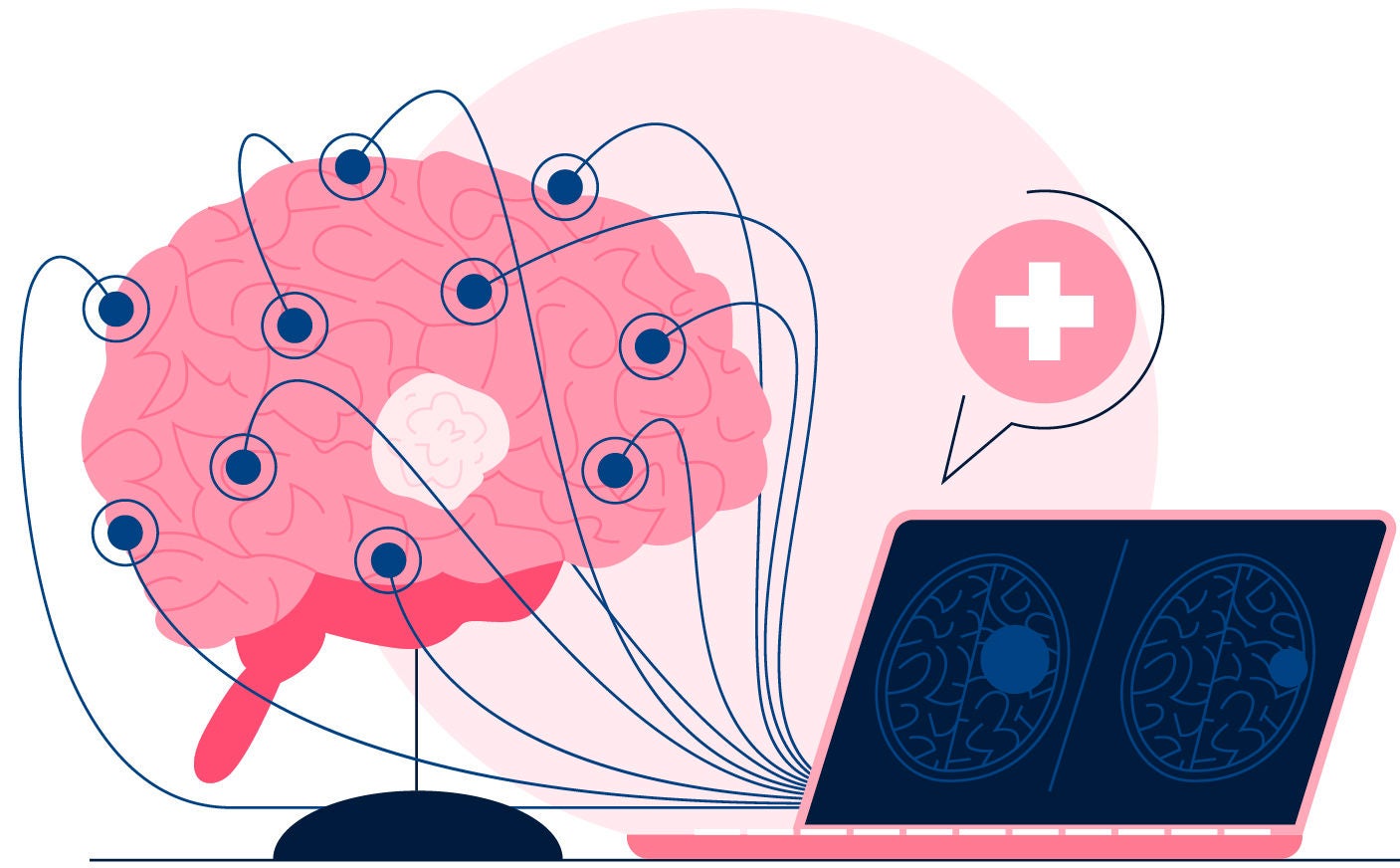
New service introduced to record brain activity and seizures in patients’ homes.
Knowing what happens during a seizure is key for accurate diagnosis and treatment of epilepsy. An electroencephalogram (EEG) is a test that tracks and records any unusual activity in the brain that can occur in people with epilepsy. Small sensors (electrodes) are attached to the person’s scalp to pick up the electrical activity in the brain, and identify where in the brain seizures occur.
A routine EEG lasts 20 to 40 minutes. Occasionally, an extended EEG recording may be needed. Previously, the person had to be warded for several days to carry out extended EEG monitoring, but in 2020, NNI launched the ambulatory EEG (AEEG) service so patients can now have the option of being monitored at home.
The portable device is made up of an EEG recorder and video camera, which allow patients to go about their normal routine while being monitored for 24 to 72 hours. If patients experience a seizure or other symptoms during the monitoring period, they or their caregivers push an event button and/or talk through a microphone, and describe what they experience or see.
“Patients’ attacks often do not occur in an unfamiliar hospital environment. Therefore, it may be more useful and convenient for EEG monitoring to take place at home, where patients can continue with their usual activities, and enjoy a less disturbed night’s sleep. AEEG is most useful for patients who experience frequent events,” explained Dr Tan Yee-Leng, Deputy Head of Ambulatory Services (Neurodiagnostic Laboratory), and Senior Consultant, Department of Neurology, NNI.
For Ms Lily Tan*, 48, being warded to monitor her seizures was not an option. A head injury sustained in her teenage years has impaired her short-term memory, movement, and sense of danger. “We are glad that we could use the AEEG as Lily could not stay overnight in the hospital alone,” shared Lily’s elder sister. “Lily would not have been able to remember why she was there and might have removed the EEG sensors, disrupting the readings.” *name has been changed to protect the patient’s privacy |

Curious about the AEEG? Chang Chao-Li, Senior Neuro Electrophysiologist, Neurodiagnostic Laboratory (NDL), shares what patients can do to ensure a successful test.
- Stay indoors whenever possible and avoid exposure to heat.
- Position the video camera so that it stays focused on you as much as possible.
- Press the ‘Event’ button on the recorder if you experience any symptoms or events and/or talk through the microphone to describe your symptoms, and note down as many details as possible on the Event Log. If you are unable to do so, ask your family members to note down what they have observed during the events.
- Turn the camera away or cover it with a cloth when you need privacy; e.g., when getting dressed or using the bathroom, but turn it back again as soon as possible to reduce the chance of missing capturing a seizure.
- Avoid activities that cause you to perspire or get the device wet (e.g., swimming).
- Shower as usual, but do not wet your hair.
- Avoid touching the electrodes or head wrap, and do not unplug the EEG electrodes from the recorder.
- If any of the electrodes move or come loose, call the NDL during office hours at 6357 7070 for assistance.
For more information about the AEEG, speak to your neurologist.

When leaving the clinic or going out in public, the head wrap can be hidden under a hoodie, scarf or hat, and the rest of the devices can be carried in a bag
This article was published in the National Neuroscience Institute's NeusLink magazine, which covers articles about NNI updates and brain, spine, muscle and nerve conditions in English and Chinese - to read more articles click here!













 Get it on Google Play
Get it on Google Play